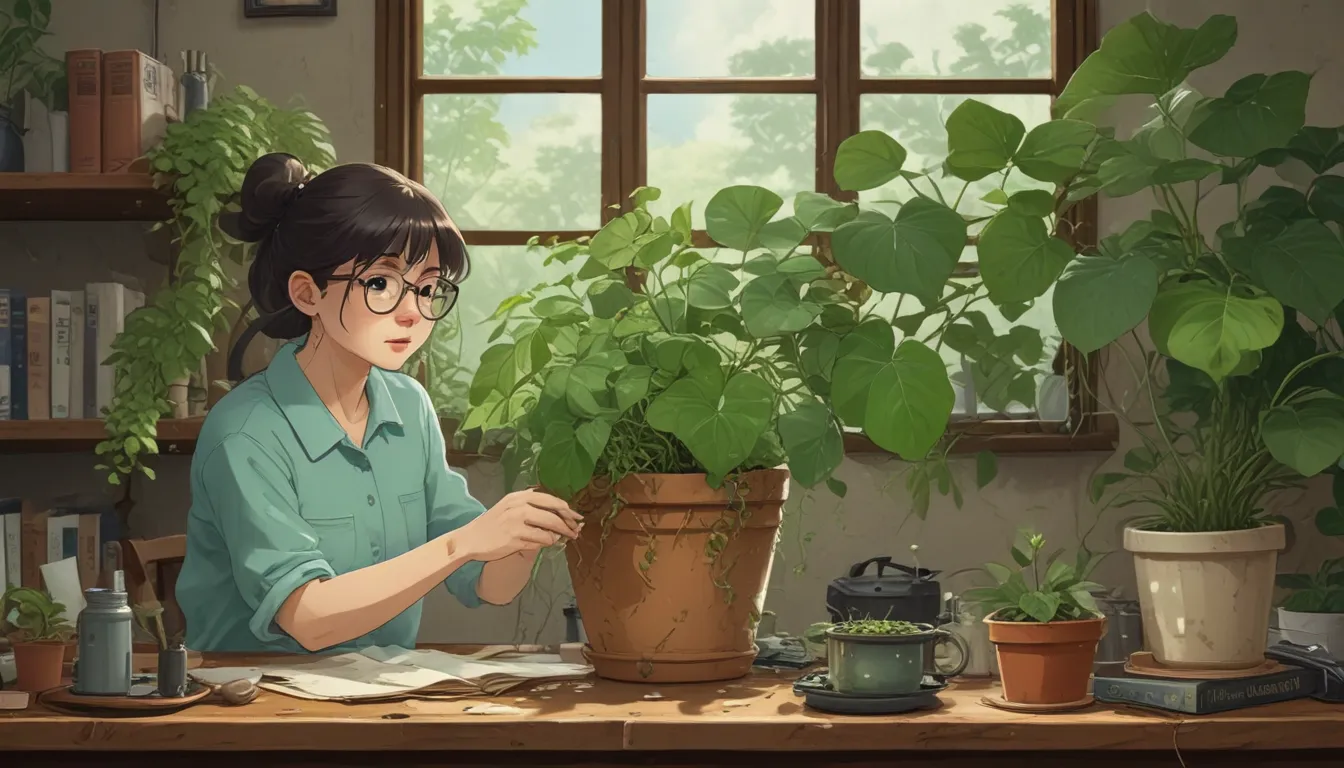How to Revive Your Stunted Pothos Plant: 7 Common Causes of Poor Leaf Growth

So you’ve heard all about how easy it is to grow pothos plants and how they practically thrive on neglect. But what happens when your pothos plant is looking sad and stunted? Don’t worry, you’re not alone in this struggle. Pothos are living things, and just like us, they can sometimes face challenges in their growth.
In this comprehensive guide, we’ll explore the various reasons why your pothos plant may be experiencing stunted growth and provide you with actionable solutions to help revive your plant. Whether it’s cold temperatures, disease, insects, insufficient light, nutrient deficiencies, rootbound conditions, or underwatering, we’ve got you covered.
Understanding Pothos Plants
Before we delve into the potential causes of stunted growth in pothos plants, let’s take a moment to understand these popular houseplants. Pothos, also known as devil’s ivy, is an evergreen vine native to forest understories in regions such as Hawaii, Fiji, Japan, the Philippines, and Vietnam. These plants are known for their resilience and adaptability, making them a favorite among both novice and experienced gardeners.
Pothos plants thrive in moderate to bright indirect light and prefer to have moist but not waterlogged soil. While they don’t require frequent feeding, occasional refreshment of the soil can provide the necessary nutrients for healthy growth. With this basic understanding of pothos plants, let’s explore the common issues that can lead to stunted growth.
7 Reasons for Stunted Pothos Growth
-
Cold Temperatures: Pothos plants prefer warm temperatures and can suffer when exposed to prolonged cold conditions. Ensure your plant is kept in a warm environment to promote healthy growth.
-
Disease: Root rot is a common disease that can affect pothos plants, leading to stunted growth and brown spots on leaves. Treat root rot promptly to save your plant.
-
Insects: Common pests such as aphids, spider mites, and scale insects can sap the vitality of your pothos plant. Regularly inspect your plant for signs of insect infestation and treat promptly.
-
Not Enough Light: Insufficient light can hinder the growth of pothos plants, resulting in stunted development and poor coloration. Ensure your plant receives adequate bright, indirect light for optimal growth.
-
Nutrient Problems: While pothos plants are low-maintenance, they still require essential nutrients for healthy growth. Monitor the soil nutrients and adjust fertilization as needed to prevent stunted growth.
-
Rootbound Conditions: When a plant outgrows its container and becomes rootbound, it can struggle to grow properly. Repot your pothos plant into a larger container to provide room for root expansion.
-
Underwatering: Adequate watering is crucial for the growth of pothos plants. Chronic underwatering can lead to stunted growth, wilting, and brown leaf tips. Establish a consistent watering schedule to maintain proper soil moisture levels.
Tips for Healthy Pothos Growth
To ensure your pothos plant thrives and overcomes stunted growth, consider the following tips:
- Monitor Soil Moisture: Use a soil moisture meter to determine the watering needs of your plant accurately.
- Provide Adequate Light: Place your pothos plant in a location with bright, indirect light to promote healthy growth.
- Address Pest Issues: Regularly inspect your plant for signs of insect pests and treat promptly with insecticidal soap or neem oil.
- Nutrient Management: Conduct soil tests to monitor nutrient levels and adjust fertilization as needed to prevent deficiencies.
- Repot as Needed: Check for rootbound conditions and repot your pothos plant into a larger container to support healthy growth.
- Establish a Watering Schedule: Maintain consistent soil moisture levels by following a regular watering schedule to prevent underwatering or overwatering.
- Observe Growth Progress: Monitor your pothos plant for signs of new growth and vitality to assess the effectiveness of your care routine.
By following these tips and addressing the potential causes of stunted growth in your pothos plant, you can help your plant thrive and regain its lush, vibrant appearance. Remember that every plant has its unique requirements, so paying attention to your pothos’ needs is key to ensuring its long-term health and vitality.
Share Your Experience
Have you encountered stunted growth issues with your pothos plant? Share your insights and experiences in the comments to help others facing similar challenges. Together, we can create a community of plant enthusiasts dedicated to promoting healthy growth and thriving greenery in our living spaces.
I hope this comprehensive guide has empowered you to revive your stunted pothos plant and set it on the path to flourishing once again. If you found this information valuable, be sure to explore our other guides on pothos care, including tips on pruning and troubleshooting common issues.
Remember, every plant deserves a chance to thrive, and with the right care and attention, your pothos plant can transform from a struggling specimen to a flourishing beauty in your home. Happy gardening!
*Article inspired by “Why Is My Pothos Plant Stunted? 7 Reasons for Poor Leaf Growth”





